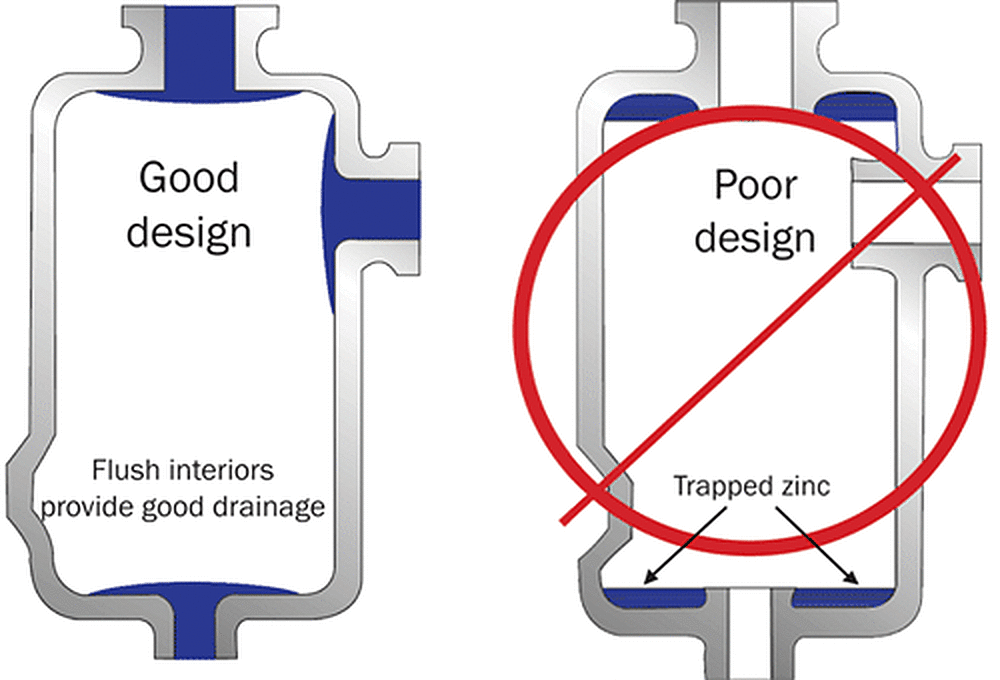Enclosed & Semi-Enclosed Products

Tanks and enclosed vessels should be designed to allow cleaning solutions, fluxes, and molten zinc to enter at the bottom and air to flow upward through the enclosed space and out through an opening at the highest point. This prevents air from being trapped as the article is immersed. The design must also provide for complete drainage of both interior and exterior details during withdrawal. The location and size of fill and drain holes are important. As a general rule, the bigger the hole the better the air and zinc flow.
When both internal and external surfaces are to be galvanized, at least one fill/drain hole and one vent hole must be provided. The fill/drain hole should be as large as the design will allow, but at least 3 in diameter for each cubic yard (10 cm in diameter for each cubic meter) of volume. The minimum diameter is 2 (5 cm). Provide vent holes of the same size diagonally opposite the fill/drain hole which allows the air to escape.
In tanks, internal baffles should be cropped on the top and bottoms or provided with suitable drainage holes to permit the free flow of molten zinc. Manholes, handholes, and openings should be finished flush inside to prevent trapping excess zinc. Openings must be placed so the flux on the vessel can float to the surface of the bath. These openings also prevent air-pocket formations that may keep solutions from completely cleaning the inside of the vessel.
Items such as vessels or heat exchangers galvanized on the outside only must have snorkel tubes, or extended vent pipes. These openings provide an air exit from the vessel above the level of molten zinc in the galvanizing kettle. Consult your galvanizer before using these temporary fittings, because special equipment is needed.
Communication with your galvanizer, including review of the drawings of enclosed or partially enclosed vessels before fabrication, is critical. Galvanizers may recommend changes that would provide a better galvanized product, and the least expensive time to make any changes that may be warranted is before fabrication.

